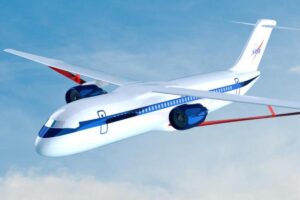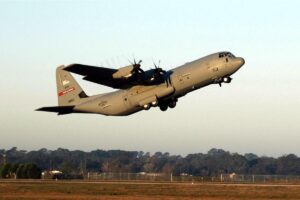ARINC 429 vs MIL-STD-1553: A Comprehensive Comparison
Abstract
This white paper provides a detailed comparison of ARINC 429 and MIL-STD-1553, two essential avionics communication protocols. It examines their features, applications, and performance to help engineers and system designers choose the right solution for their avionics systems. The paper highlights critical differences in data structure, architecture, and use cases, offering insights into selecting the optimal protocol for specific aerospace needs.
Introduction
Modern avionics systems rely on standardized communication protocols to ensure efficient and reliable data exchange. ARINC 429 and MIL-STD-1553 are among the most widely used protocols in aerospace applications. While both serve critical roles, they are tailored for different requirements and systems. This paper explores their similarities, differences, and best use cases to aid in informed decision-making.
Overview of ARINC 429 Protocol
1.1 Definition and Background
Developed by the Airlines Electronic Engineering Committee (AEEC), ARINC 429 is a unidirectional communication protocol primarily used in commercial aircraft. It is renowned for its simplicity and reliability, making it ideal for avionics systems where complexity must be minimized.
1.2 Key Features
- Unidirectional Data Flow: One transmitter communicates with multiple receivers.
- Word-Oriented Format: Data is transmitted in 32-bit words.
- Standardized Labels: Ensures consistent interpretation across systems.
- Error Detection: Incorporates parity checks to maintain data integrity.
- Fixed Transmission Rates: Operates at 12.5 kbps or 100 kbps.
1.3 Applications
- Flight Management Systems: Navigation and control data exchange.
- Cabin Management: Lighting, environmental controls, and in-flight entertainment.
- Aircraft Maintenance: System monitoring and diagnostics.
Overview of MIL-STD-1553 Protocol
2.1 Definition and Background
MIL-STD-1553 was introduced in the 1970s to standardize communication in military aircraft. It features a dual-redundant, time-multiplexed bus architecture designed for reliability and fault tolerance in mission-critical operations.
2.2 Key Features
- Dual-Redundant Architecture: Ensures communication continuity in case of bus failure.
- Bidirectional Communication: Facilitates data exchange between multiple devices.
- Message-Oriented Protocol: Commands and data are structured as messages.
- Real-Time Operation: Low latency and deterministic timing.
- Error Detection and Correction: Advanced mechanisms to ensure reliability.
2.3 Applications
- Military Aircraft: Weapon systems, flight controls, and mission data.
- Space Systems: Satellite communication and control.
- Naval Applications: Integrated combat systems.
Key Differences Between ARINC 429 and MIL-STD-1553
3.1 Architecture
- ARINC 429: Simple point-to-point communication with a single transmitter and multiple receivers.
- MIL-STD-1553: Complex multi-drop bus with up to 31 remote terminals.
3.2 Data Flow
- ARINC 429: Unidirectional, reducing system complexity.
- MIL-STD-1553: Bidirectional, supporting more interactive communication.
3.3 Data Rate
- ARINC 429: Fixed rates of 12.5 or 100 kbps.
- MIL-STD-1553: Operates at a maximum rate of 1 Mbps.
3.4 Error Handling
- ARINC 429: Utilizes parity checks for basic error detection.
- MIL-STD-1553: Employs more sophisticated error detection and correction techniques.
3.5 Redundancy
- ARINC 429: Lacks inherent redundancy.
- MIL-STD-1553: Dual-redundant architecture enhances fault tolerance.
3.6 Scalability
- ARINC 429: Limited scalability due to its point-to-point design.
- MIL-STD-1553: Highly scalable, accommodating multiple devices on a single bus.
Benefits and Limitations
4.1 ARINC 429
Benefits
- Simplicity: Easy to implement and maintain.
- Reliability: Proven performance in commercial aviation.
- Cost-Effective: Lower implementation costs compared to MIL-STD-1553.
Limitations
- Unidirectional Data Flow: Limits interactivity between systems.
- Scalability: Challenges in accommodating complex networks.
4.2 MIL-STD-1553
Benefits
- Robustness: Ideal for mission-critical applications.
- Scalability: Supports complex, multi-device systems.
- Error Handling: Advanced mechanisms ensure data integrity.
Limitations
- Complexity: Higher implementation and maintenance costs.
- Latency: Slightly higher than ARINC 429 for simple applications.
Selecting the Right Protocol
5.1 Factors to Consider
- System Requirements: Determine the level of interactivity and scalability needed.
- Cost Constraints: Balance performance with budgetary limitations.
- Application Type: Match the protocol to the operational environment (commercial vs. military).
- Data Volume: Assess the amount of data to be transmitted.
5.2 Use Cases
- ARINC 429: Best for commercial aviation applications requiring simplicity and reliability.
- MIL-STD-1553: Suited for military and space systems demanding robustness and scalability.
Integrating ARINC 429 and MIL-STD-1553 Systems
6.1 Protocol Conversion
Interoperability between ARINC 429 and MIL-STD-1553 systems is achieved through protocol converters. These devices translate data formats and ensure seamless communication.
- Hardware Converters: Real-time translation for mission-critical applications.
- Software Solutions: Flexible options for non-critical environments.
6.2 Challenges
- Data Mapping: Aligning different data structures.
- Timing and Latency: Managing synchronization between protocols.
- Cost: Balancing performance and budget.
Future Trends in Avionics Communication
7.1 Enhanced Protocols
- ARINC 664: Expanding on ARINC 429 with Ethernet-based communication.
- MIL-STD-1760: Building on MIL-STD-1553 for advanced weapon systems.
7.2 Integration with Emerging Technologies
- IoT: Incorporating Internet of Things (IoT) devices into avionics systems.
- AI and Machine Learning: Enhancing decision-making and predictive maintenance.
7.3 Standardization Efforts
Collaborative efforts are underway to harmonize communication standards, ensuring broader interoperability.
Conclusion
ARINC 429 and MIL-STD-1553 serve distinct purposes in avionics systems, each excelling in specific scenarios. While ARINC 429 is ideal for commercial aviation, MIL-STD-1553 offers the robustness required for military and space applications. Understanding their differences and applications enables engineers and system designers to make informed decisions, ensuring optimal system performance and reliability.





